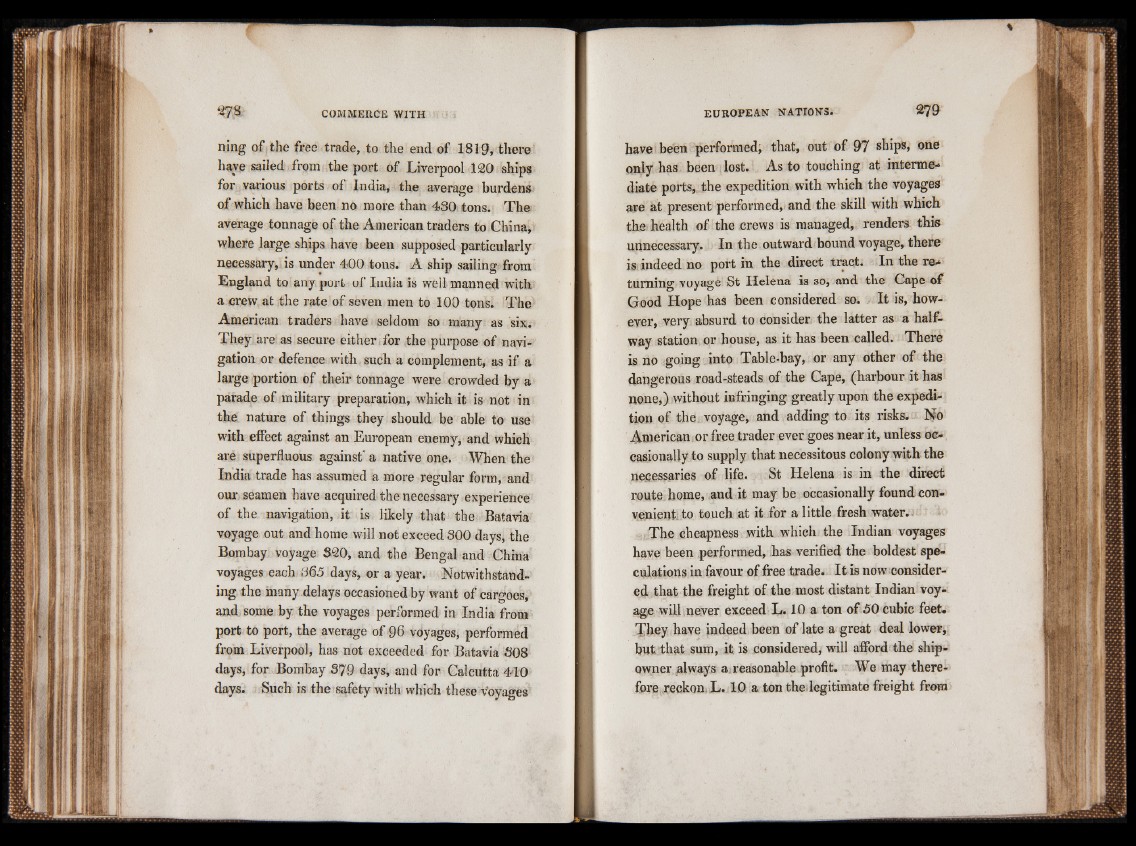
ning of the free trade, to the end of 1819, there
have sailed frqm the port of Liverpool 120 ships
for various ports of India, the average burdens
of which have been no more than 480 tons. The
average tonnage of the American traders to China,
where large ships have been supposed particularly
necessary,: is under 400 tons. A ship sailing from
England to any port of India is well manned with
a crew at the rate of seven men to 100 tons. The
American traders have seldom so many as six.
They are as secure either, for the purpose of navigation
or defence with such a complement, as if a
large portion of their tonnage were crowded by a
parade of military preparation, which it is not in
the nature of things they should be able to use
with effect against an European enemy, and which
are superfluous against' a native one* When the
India trade has assumed a more regular form, and
our seamen have acquired the necessary experience
of the navigation, it is likely that the Batavia
voyage out and home will not exceed 300 days, the
Bombay voyage 820, and the Bengal and China
voyages each 365 days, or a year. Notwithstanding
the many delays occasioned by want of cargoes,
and some by the voyages performed in India from
port to port, the average of 96 voyages, performed
from Liverpool, has not exceeded for Batavia 808
days, for Bombay 379 days, and for Calcutta 410
days. Such is the safety with which these voyages
have been performed; that, out of 97 ships, one
only has been lost. As to touching at intermediate
ports, the expedition with whieh the voyages
are at present performed,, and the skill with which
the health of the crews is managed, renders this
unnecessary. In the outward bound voyage, there
is. indeed no port in the direct tract. In the returning
voyage St Helena is so, and the Cape of
Good Hope has been considered so. It is, however,
very absurd to consider the latter as a halfway
station or house, as it has been called. There
is no going into Table-bay, or any other of the
dangerous road-steads of the Cape, (harbour it has
none,) without infringing greatly upon the expedition
of the, voyage, and adding to its risks. No
American or free trader ever goes near it, unless occasionally
to supply that necessitous colony with the
necessaries of life. St Helena is in the direct
route home, and it may be occasionally found convenient
to touch at it for a little fresh water. .*
The cheapness with which the Indian voyages
have been performed, has verified the boldest speculations
in favour of free trade. It is now considered
that the freight of the most distant Indian voyage
will never exceed L. 10 a ton of 50 cubic feet.
They have indeed been of late a great deal lower,
hut that sum, it is considered, will afford the shipowner
always a; reasonable profit. We may therefore
.reckomL. 10 a ton the legitimate freight from